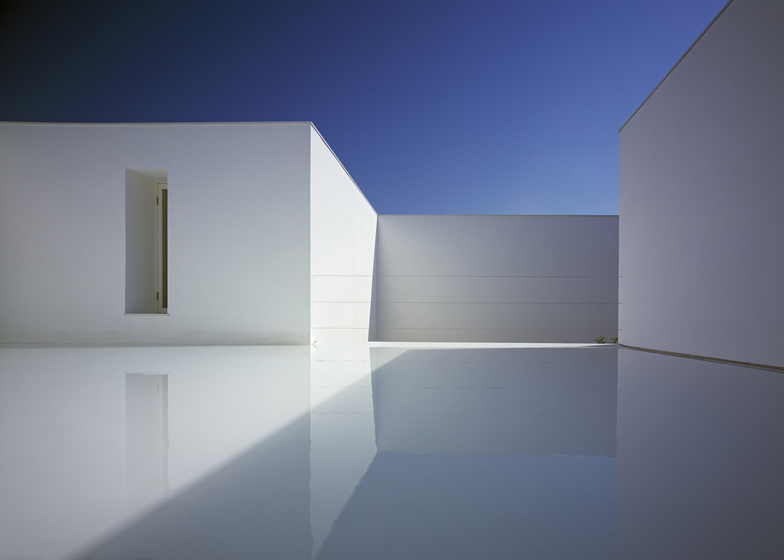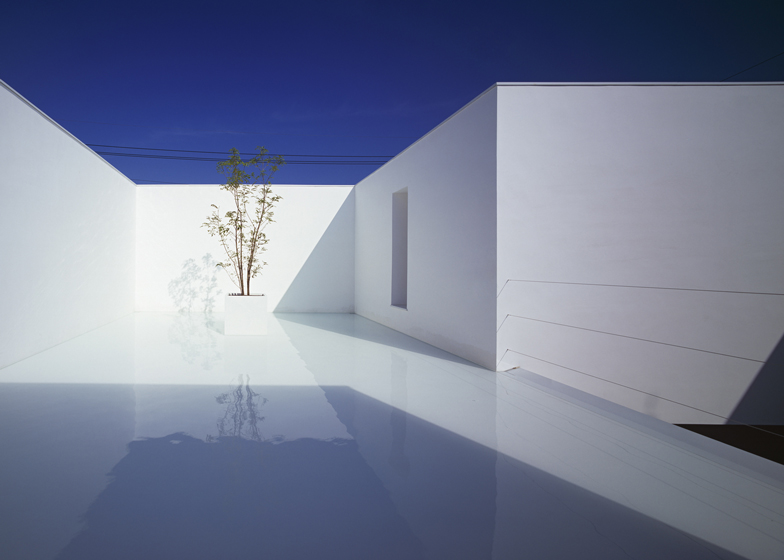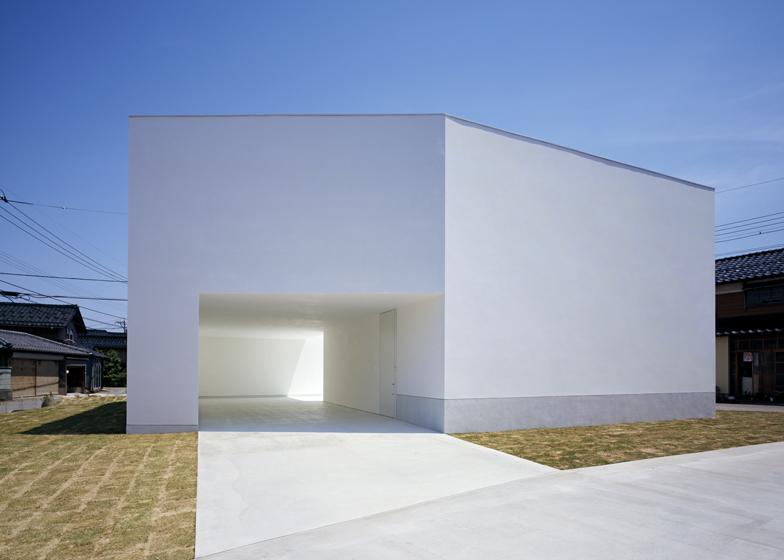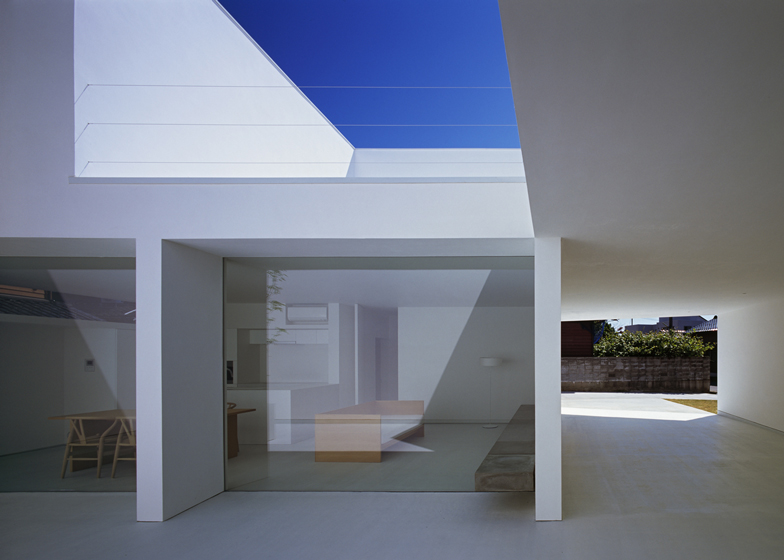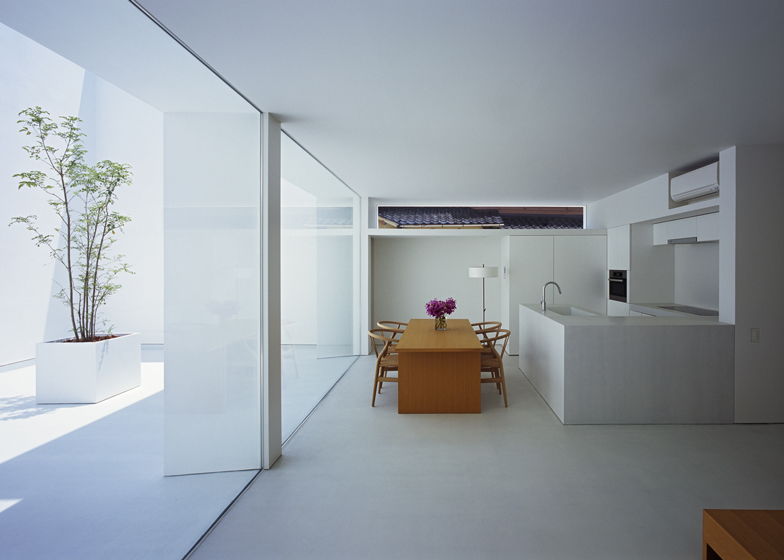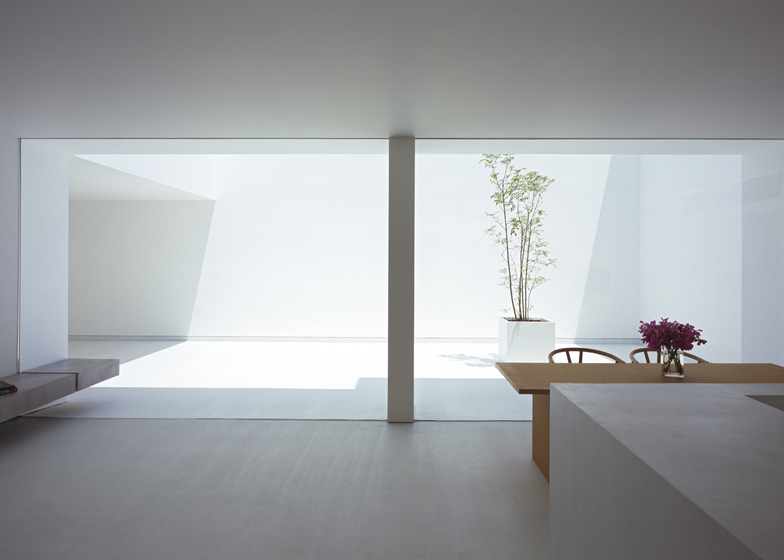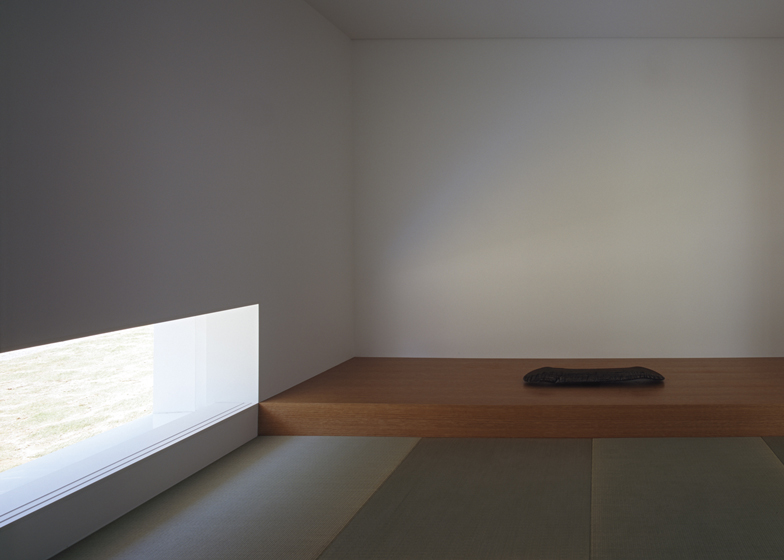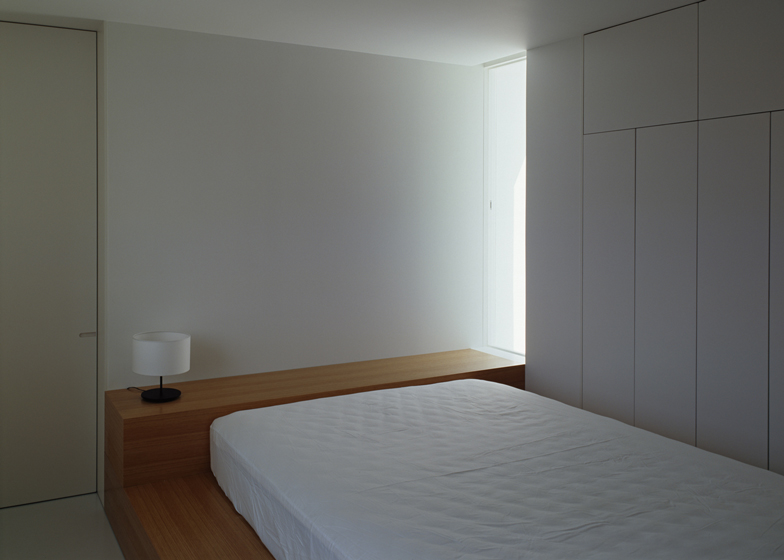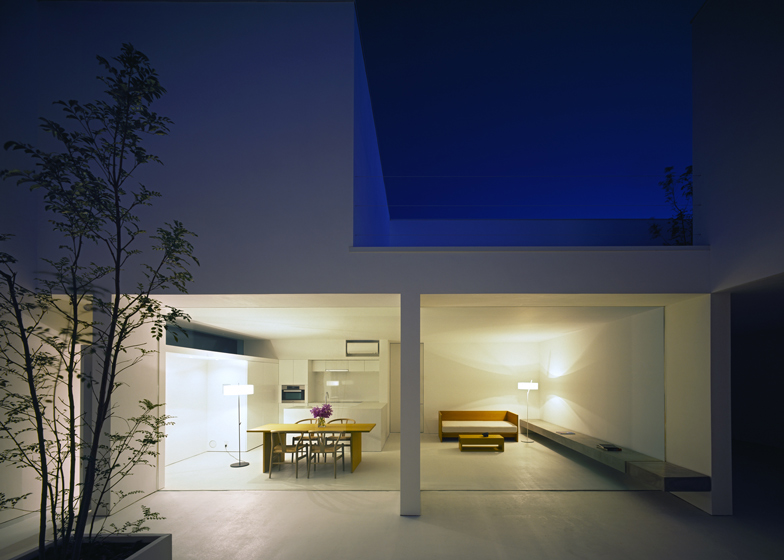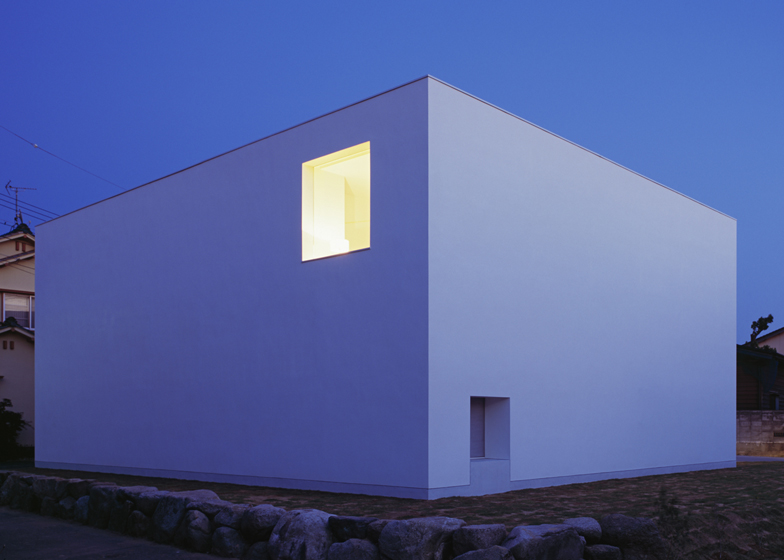This house in Kanazawa by Japanese architect Takuro Yamamoto is punctuated by a series of interconnecting voids, including a terrace with a shallow reflecting pool (+ slideshow).
The client asked Takuro Yamamoto Architects for a simple building with several outdoor spaces, so the Tokyo-based firm inserted holes into the monolithic structure to create a courtyard and covered parking space on the ground floor, as well as the first floor terrace.
"The connection of voids – we call it Cave – is the theme of this house," explain the architects, adding that the different voids "serve multiple purposes in order to make up for the space limitations."
The house's exterior appears as a plain white volume, with one surface interrupted by an aperture that creates the parking space and a covered entrance passage to protect the owners from the winter snowfall.
This void continues around a corner, where it becomes a secluded courtyard visible from the open plan kitchen and living space through full-height windows.
Views of the "cave" change throughout the day depending on the angle of the sun, and the architects added the shallow pool on the terrace "because we thought water is inseparable from white caves."
The interconnected outdoor spaces also provide a route for snow to be cleared if it starts to build up in winter.
Takuro Yamamoto Architects previously designed a house in Kashiwa, Japan, around an angled central courtyard that divides the surrounding space into smaller rooms.
Other Japanese houses on Dezeen include one with a facade that looks like a picture frame surrounding a courtyard garden and another simple white cube that resembles a block of tofu. See more Japanese houses »
Cave-like structures have appeared before on Dezeen, including a bathroom showroom by Zaha Hadid and a faceted church hall in Austria. See more caves »
Photography is by Ken'ichi Suzuki.
Here's a project description from the architects:
White Cave House
White Cave House is a massive lump engraved by a series of voids interconnected in the shape of a kinked tube. The connection of voids - we call it Cave - is the theme of this house.
Internal rooms are designed to enjoy the minimum views of Cave characterized by its whiteness. At the same time, this concept is also the practical solution to realize a courtyard house in Kanazawa city known for heavy snow in Japan.
The client’s original request was a white minimally-designed house with many external spaces, such as a large snow-proof approach to the entrance, a roofed garage for multiple cars, a terrace facing to the sky, and a courtyard.
Though a roofed entrance and a garage are desirable for snowy place, it takes so many floor areas away from the internal rooms for the family, while the space and the budget is limited. In addition, courtyard style itself is not suitable to the snowy country because courtyards would be easily buried under snow.
To solve the problems, we proposed to connect these external spaces to one another with a large single tube, or Cave, and have each part serve multiple purposes in order to make up for the space limitations.
We designed Cave unstraight because it prevents passengers outside from seeing through, though it is not closed. By this arrangement, Cave takes a new turn for each part letting in the sunshine while protecting privacy of the courtyard, the terrace, and the internal rooms.
The family inside can enjoy the view of Cave changing its contrast throughout a day under the sunshine. Cave also serves as a route to remove snow from the external spaces in winter, otherwise you would be at a loss with a lot of snow in the enclosed courtyard.
In order to make Cave deserve its name more, we wondered if we could add the reflection of water to the house because we thought water is inseparable from white caves.
We eventually figured out that the terrace was an appropriate site to place it. The terrace covered by white waterproof FRP holds a thin layer of water like a white basin.
On the terrace reflecting the skyview without obstacles, you may feel that Cave has brought you to another world far from the daily life.
Credits: Takuro Yamamoto Architects
Location: Kanazawa
Use: independent residence
Site area : 493.88m2
Building area : 132.68m2
Total floor area: 172.33m2
Completion: June 2013
Design period: February 2011-September 2012
Construction period: October 2012-June 2013
Structure: Wood
Client: a married couple + a child
Architect: Takuro Yamamoto
Structure design: Yamada Noriaki Structural Design Office
Construction: Ninomiya-Kensetsu

